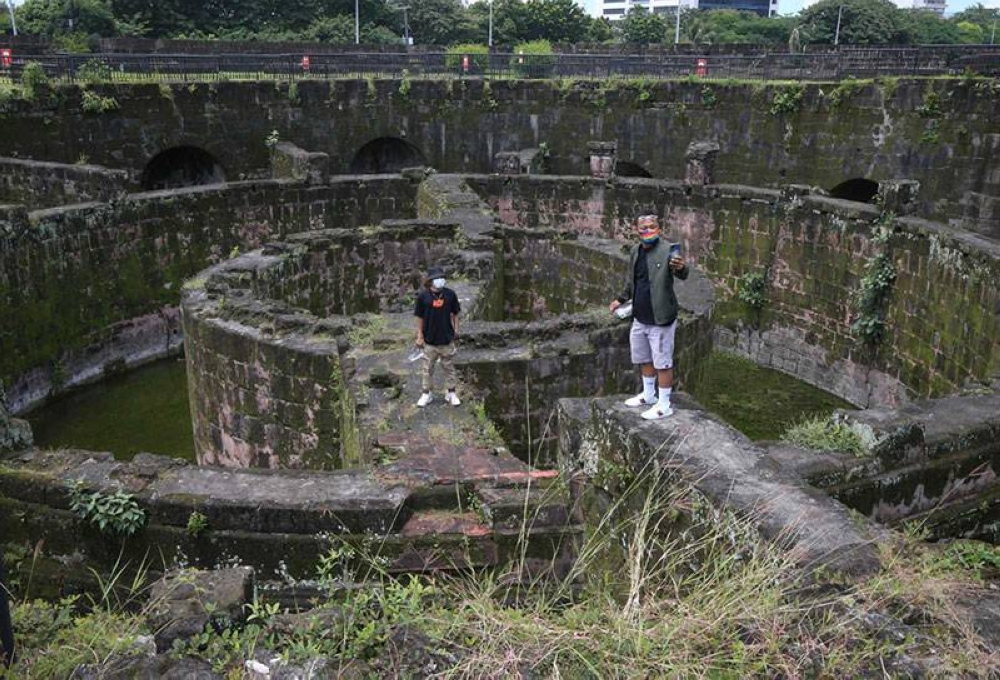By: Jillian Dionela
History of Intramuros
The Walled City of Intramuros in Manila City is located south of the Pasig River and east of Manila Bay. It was constructed by Spanish colonizers in the mid 1500s after their arrival to serve to establish their military and political bases in Asia.
Intramuros was constructed as a city with a privileged status with churches, schools and government structures. These walls were later built to safeguard Intramuros from natural disasters as well as intruders. Intramuros was the capital of power during Spanish rule.
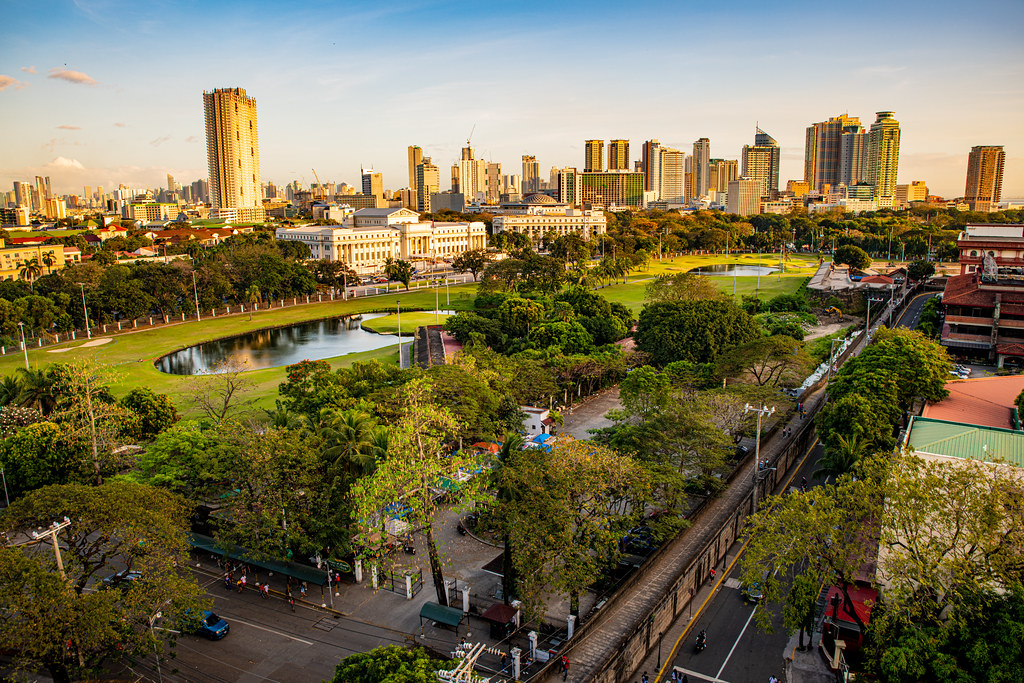
In addition to the 4.5-km. wall, which is where the name originated (“within within the wall”) there were other defensive structures were built to surround the city like moats, cannons, bulwarks and javelins. The wall not only protected Intramuros from natural disasters, but it also deterred the threat of Chinese pirates, Dutch force, Chinese pirates, Dutch forces and other intruders.
While heavily inspired by Spanish architecture (think extravagant baroque church designs) Renovations have also exposed the Chinese influences. In the 80s, government officials facilitated an enormous restoration effort that restored Intramuros to the present condition.
The fact that it is no longer an eye-sore, however. The history behind the ruin is what makes it an important place to visit in Manila even today despite the changes it has seen.
Additionally to that, fortresses, ramparts and gates of the past remain open and are the mainstay of walks and cultural events for tourists who want to know more about the country’s history. In the present, Intramuros is a prominent tourist attraction where you are able to experience the Spanish-era Manila through the city’s walls, restaurants, churches and museums.
How to go to Intramuros
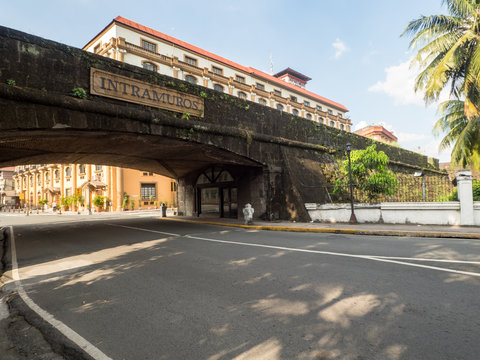
At Quezon Avenue in Quezon City take a jeepney, or van that is bound to Buendia. The driver may request to drop the passengers on Liwasang Bonifacio (also widely known as its previous designation, Plaza Lawton). If you’re at Liwasang Bonifacio, it’s just one short stroll to Intramuros.
If there are no Buendia-bound vehicles on the road then you could opt for either a jeepney or a van that goes to Quiapo. From Quiapo you can take a jeepney to Pier 15 that passes within Intramuros.
If this is your first time visiting Intramuros and you’re a bit unsure concerning public transportation then you could take a taxi or utilize the mobile app of Grab.
What to see and do in the Intramuros
The city’s walls aren’t very large, and when compared to other tourist spots located in Metro Manila, there are very few activities and sights are accessible inside the walled city.
The best part about visiting the Walled City is that each place you visit is rich in historical significance and is just an easy walk from one another. Here are a few of the structures and landmarks that you should definitely visit in Intramuros:
1. Fort Santiago

A trip to Intramuros can’t be complete without getting close to the things that were the reason it became so famous–the brick wall, garrison and fortifications that protected the elites and colonizers who used to reside in the area. The strongholds remain in the city to this day, leaving just a few stretches of land in the vicinity of Pasig River. Pasig River.
The most well-known among the forts would have been Fort Santiago in the northwestern northern part of the city. Fort Santiago is the primary fortification of Intramuros constructed in the 1500s. It’s located on Pasig River; being a defense fortress, it’s strategically placed to protect against pirates and other invaders.
2. Marvel at the architectural design and the faith that is reflected in the churches.

The Spaniards are responsible for the growth of Christianity in the Philippines It also was logical to Intramuros to be home to a handful of churches so that the colonizers within can continue to practice their religion. The two most prominent include Manila Cathedral and San Agustin Church.
The Grand Manila Cathedral, founded in 1571, is one the most easily recognized structures within Intramuros. The present structure is the fifth church built following the earlier ones that were destroyed by natural disasters and the Second World War. The Manila Cathedral is also a well-known wedding location. The cathedral was dedicated to Immaculate Conception.
The San Agustin Church, founded in 1571, has been classified as an World Heritage Site by UNESCO as well as a National Historical Landmark by the Philippine Government. San Agustin Church is the oldest church built of stone located in the Philippines. The present structure constructed out of stones, was the 3rd church to be constructed in the area after the two first timber structures had been destroyed in a fire.
3. The time to pass is in public squares and important structures
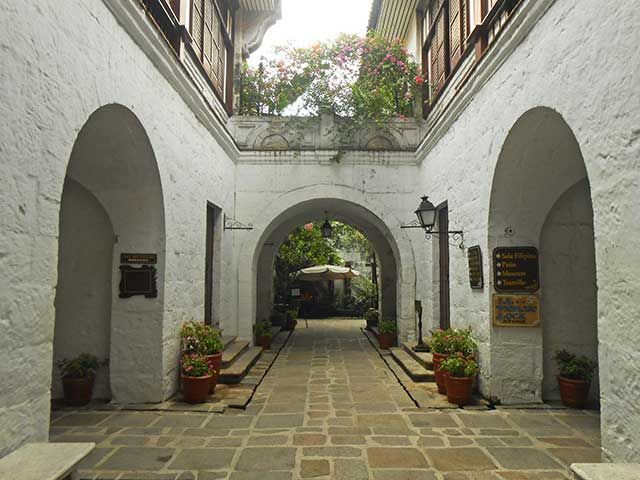
As it used to be home to the elite at the time It’s not a surprise that there are numerous public squares in Intramuros that people can use to spend their time in leisure. Since then, Plaza de Roma has been one of the town squares. Plaza de Roma, located right across Manila Cathedral, was the principal public square in Intramuros. It was the site of many gatherings and celebrations before it was turned into an outdoor garden by the Governor-General in the late 17th century.
Plaza San Luis took its name from one of the old barrios of Intramuros. It’s now an urban and cultural complex that includes museums, restaurants and a venue for events. Plaza San Luis is located close to San Agustin Church.
4. Visit a museum
A trip to an art museum is a good idea if you love admiring antiques and other historical artifacts. If you are in Intramuros you are essential to know the most about the rich past of the city’s walled walls, but also about Manila as a whole. There is nothing better to learn than these Intramuros museums.
- Casa Manila
- San Agustin Church Museum
- Rizal Shrine Museum
- Rizaliana Furniture Exhibit
- Bahay Tsinoy
- Archdiocesan Museum of Manila
- Light and Sound Museum
- Fr. George J. Willmann, SJ Museum
- The Bonsai Library and Museum
- The Silahis Center
- Baluarte de San Diego
- Likha-an sa Intramuros
- Destileria Limtuaco Museum
- iMake History Fortress LEGO Education Center
- Instituto Cervantes de Manila
- Museo de Intramuros
- The Attic Museum
- Colegio de San Juan de Letran
San Agustin Museum

The museum houses an assortment of Spanish colonial-era ecclesiastical clothes as well as manuscripts, sacred vessels as well as ivory and wooden statues, Dominican paintings and sculptures and a variety of other sacred objects.
Light and Sound Museum

In this interactive museum visitors can explore Philippine history during the Spanish rule and the lifestyle of Rizal by way of images, sounds and animatronics.
Bahay Tsinoy
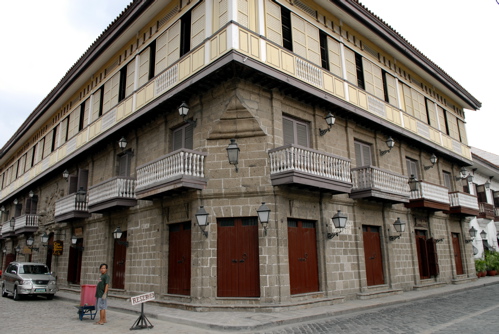
In this site, you can discover the past and achievements of China-Filipino communities, which includes those who supported the Filipinos’ revolution against Spaniards.
It also houses galleries as well, such as Batang Tiaong, Bahay na Bato (Chinese settlement in Manila), Ching Ban Lee Ceramics Gallery, Martyrs Hall along with Batang Tiaong.
Casa Manila
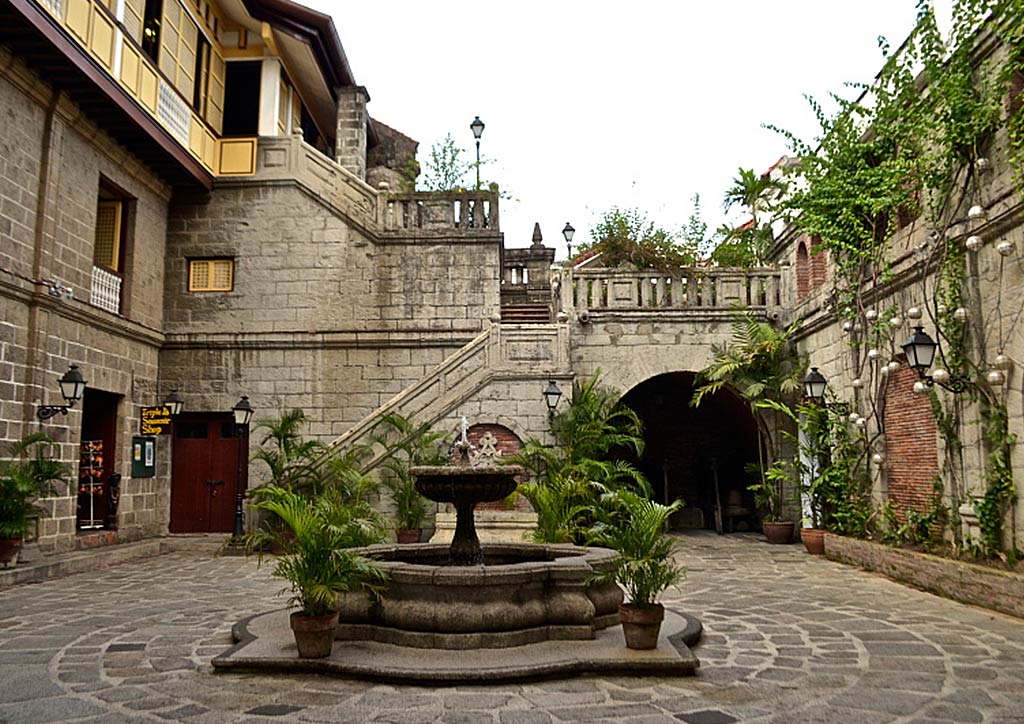
The location can be described as a recreation of residence of a wealthy family from the 18th century or the Ilustrados.
These are the educated and wealthy classes that held immense influence in both the state and among the people. The homes are full of furniture, art and other objects that date back to the colonial age.
5. Dine In

In Intramuros eating out is about the ambience and overall experience, not the diversity and variety of food options. There’s nothing really unique about eating in a restaurant, but when you’re in Intramuros located in the midst of historical buildings, the dining experience gets a new level. The majority of restaurants located in Intramuros provide Filipino cuisine , so if that is what you want, then make your way to the city that is walled.
There are some restaurants that serve international cuisines (after all, Manila is a melting pot of different kinds of cultures) which foreigners may be familiar with but the best method to take pleasure in your Intramuros food tour is to stick to local favorites that serve traditional Filipino food and a cultural experience.
6. Ride a Bambike

The most well-known thing to do in Intramuros is exploring Intramuros on bicycles. These aren’t your typical bicycles, they are eco-friendly , sustainable, and bamboo bicycles that are made by hand. If you’d like to experience this, you must look into Bambike’s website. The price for this tour is P1,747.98.
Where can you stay
The space within Intramuros is small, it is only sensible to have only a handful of accommodation options available to people who wish to stay inside these walls during the duration of their stay. Some are quite expensive. But, there are plenty of alternatives beyond the walls.
Types of Accomodation:

There’s a lot of activity taking place within Intramuros, Manila, or almost any city or district within the Metro. But, the capital city doesn’t let tourism down and, therefore, whatever type of traveler you’re: someone who backpacks with money in the bag or an experienced traveler who’s had saved for a week of adventure, there’s going to be a perfect accommodation option both inside and out of Intramuros.
Hotels
Budget and luxury Hotels of all kinds are found in Manila. In actuality, Manila Hotel, one of the most well-known brands in luxury hotels, is within Intramuros. But, as one of the most popular tourist destinations in the Philippines, Manila caters to penny-pinchers and budget-conscious travelers too.
Apartment and Condominium Units for Rent
Rental properties around Intramuros are usually available on Airbnb. There are many apartments and condominiums in Manila mostly due to the recent growth of the real estate sector. A lot of these rooms can be rented out for various reasons, which makes it a reasonable option for accommodation for tourists.
What to Pack
Other than your basic necessities (i.e. passport, ID cards, cash and other ID cards. ) In addition, you might need your smartphone along with pocket Wi-Fi (or purchase local SIM to use data) to help you navigate if you need to. Unfortunately there aren’t all public spaces in the Philippines offer free Wi-Fi, so it’s best to have your own.
As we’ve mentioned before, pack lightweight clothing and shoes that are comfortable for walking. If you’re anticipating rain, make sure you have an umbrella, raincoat or jacket to safeguard yourself. If it’s going to be warm, a new set of clothing, towels as well as plenty of water are essential.
Things to Remember
- Intramuros is a public space therefore there is no entrance cost for visitors who would like to go there.
- Intramuros is the best place to explore during the dry time that runs from January to May.
- Dress in comfortable shoes and clothes while walking through Intramuros. If you’re traveling on your own and you are traveling on your own, it might be beneficial to carry an extra selfie stick to capture memorable images as you wander around Intramuros.
- You can take as many photographs as you like of the iconic landmarks of Intramuros.
- Intramuros is usually a secure location, particularly since there are security guards in numerous corners and structures. But, be cautious and ensure your possessions are secured, especially in case you’re exploring unfamiliar territory.
- Intramuros is easily accessible by vehicle.
- Always seek permission before you want to visit a structure or square.
- There are a lot of dark places in Intramuros and it is scary in certain places. Actually, some of the most frightening locations in Manila are located in Intramuros.
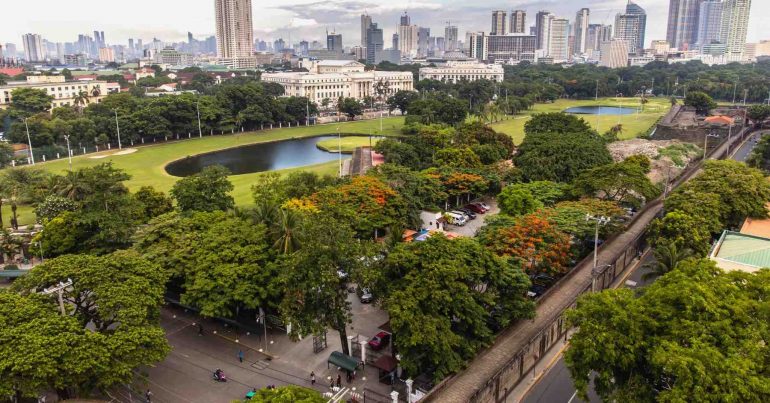
At present, upgrades and enhancements are being carried out to preserve the appearance and timeless appeal of Intramuros. It’s always good to visit again and discover the latest developments if you’re looking for.
Intramuros is an ongoing reminder to Filipinos to remember that beauty exists even in the chaos. Maybe not necessarily in terms of appearance however, the fact that they are able to endure the harsh realities of time and the past and improve from them is still something to be celebrated.
It is an extremely secure city, protected by fortifications, however its rich past must be displayed at the forefront for the world to experience. This is the reason Intramuros is one of the most well-known destinations on Manila tours.
Take a trip back in time to discover for yourself the things that make Intramuros an exceptional destination. Intramuros tours , activities and excursions are available throughout the year for you to experience.

